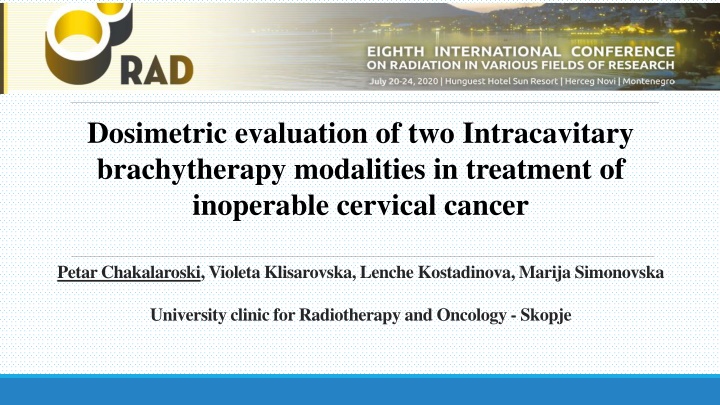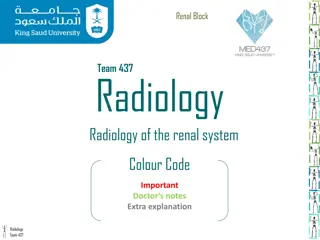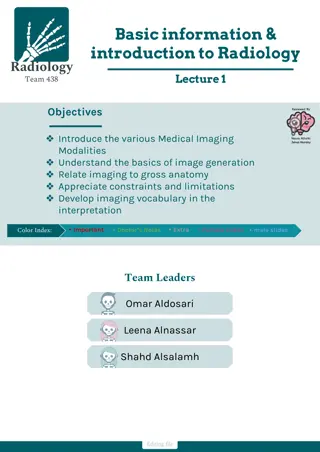Dosimetric evaluation of two Intracavitary brachytherapy modalities in treatment of inoperable cervical cancer
This study compares the dosimetric evaluation of two intracavitary brachytherapy modalities for inoperable cervical cancer treatment. It analyzes the dose distribution in organs at risk, specifically bladder and rectum, to assess the effectiveness and feasibility of the different treatment approaches. The results indicate comparable absorbed doses in organs at risk for both modalities, demonstrating the potential successful utilization of 2D HDR ICB in specific patient scenarios. The research highlights the importance of personalized treatment planning in radiation oncology for optimizing outcomes in cervical cancer management.
Download Presentation

Please find below an Image/Link to download the presentation.
The content on the website is provided AS IS for your information and personal use only. It may not be sold, licensed, or shared on other websites without obtaining consent from the author.If you encounter any issues during the download, it is possible that the publisher has removed the file from their server.
You are allowed to download the files provided on this website for personal or commercial use, subject to the condition that they are used lawfully. All files are the property of their respective owners.
The content on the website is provided AS IS for your information and personal use only. It may not be sold, licensed, or shared on other websites without obtaining consent from the author.
E N D
Presentation Transcript
Dosimetric evaluation of two Intracavitary brachytherapy modalities in treatment of inoperable cervical cancer PetarChakalaroski, VioletaKlisarovska, Lenche Kostadinova, MarijaSimonovska University clinic for Radiotherapy and Oncology - Skopje
INTRODUCTION: Brachytherapy comprises an integral part of inoperable cervical cancer definitive treatment. Mostly used is intracavitary brachytherapy (ICB) with it s primary role of boosting the total dose needed for obtaining disease local control. ICB uses intra- uterine probe and ovoids/ring placed inside the natural cavities combined with after-loading source placement in several applications following external beam radiotherapy treatment (EBRT). Although three-dimensional (3D) ICB planning is used, sometimes plans are calculated with two- dimensional planning (2D), especially when shorter treatment time is needed due to various reasons.
METHODS AND MATERIALS: 20 patients were treated with ICB, with prior EBRT dose of 50.4Gy. 10 patients received high dose rate (HDR) ICB in three applications (once a week) with dose of 7Gy/weekly and total dose reaching 21Gy. 10 patients received their HDR ICB in two applications with dose of 9Gy and total dose of 18Gy. All patients had 2D planning. Organ at risk (OAR) constrains were adequate for 2D planning (70% of the prescribed dose for rectal points and 80% of the prescribed dose for bladder point). Radiobiological equivalent for 2Gy daily dose (EQD2, alpha/beta=10) for 3x7Gy ICB treatment is 29.8Gy and 28.5Gy for 2x9Gy ICB respectively.
RESULTS: Organs at risk absorbed doses were evaluated in bladder and rectum. 2x9Gy ICB whole treatment doses for rectum averaged at 4.04Gy, while doses for bladder averaged at 3.93Gy. 3x7Gy ICB doses for rectum averaged at 3.47Gy and averaged at 2.57Gy for bladder. CONCLUSION: OAR absorbed doses were comparable and both maintained prescribed the prescribed dose constrains. Keeping in mind that three-dimensional (3D) ICB is the mainstay, yet in some situations where patient conditions differ or when 3D planning resources are limited, both modalities (2x9Gy and 3x7Gy) of 2D HDR ICB can be equally used successfully.























